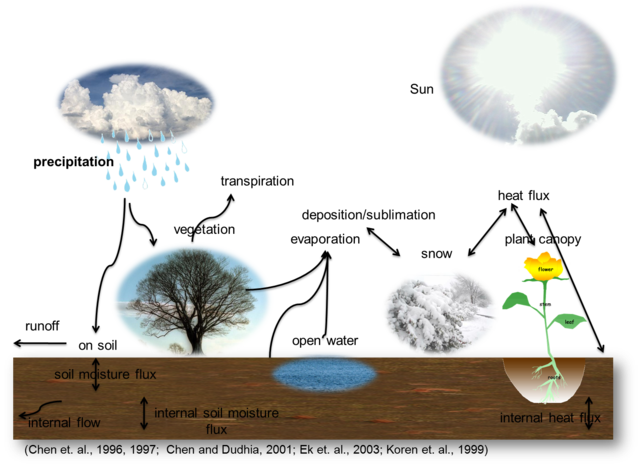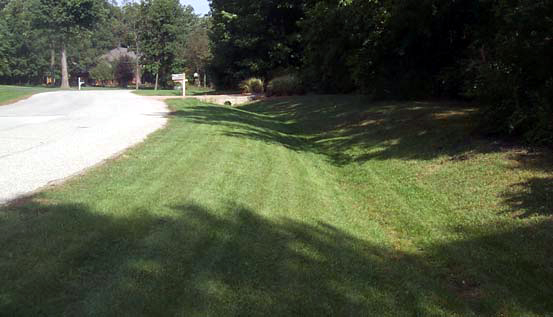Water was the most important ingredient to the juice that started life on earth. Most lifeforms on earth cannot survive without water. Water is critical for survival and reproduction of life.
Water can turn a desert into a tropical forest. Conversely, lush green farms can turn into arid deserts when water is managed poorly.

Healthy water bodies
Rivers, ponds, swamps, natural reservoirs, underground water tables are the biggest sources of water for agriculture. Salt water is unusable for growing plants, even toxic to the soil. 97% of all water on earth is saline and is stored in oceans and seas. That leaves only 3% of all naturally ocurring water not salty and can be used for growing food.
Healthy water bodies support other life forms in its natural form. They form microclimates that faciliate propagation of life. Over time, barring human intervention, these water bodies continue to grow, teeming with life in a few years.
Hydrological cycle
In simple words, water evaporates from water bodies , both saline and non-saline, and is captured in clouds. This water falls on land in the form of rains replenishing fresh water bodies inland.
Small water cycle or local water cycle – Water cycle that are isolated in a small region are local water cycles. In this case, water evaporates from inland water sources and comes down later in nearby or the same area from where it evaporated.
Global water cycle – Water evaporates from far away water sources and rains down on land after travelling large distances in the form of clouds.
Many projects are conducted every year that validate our understanding of how water can bring land back to life from the brink of destruction.
A project conducted in India in recent years, where ponds were built to rejuvenate soil, illustrates this effectively. The following video contains more details.
Ill-effects of salt water
Salt water cannot be used for growing crops. It collects excessively in the plant bodies and causes salt-stress. This stops other nutrients from reaching the plant. The plant eventually dries up and dies. Salt also collects in soil over time and kills or retards growth of helpful micro organisms in the soil. Overall, salt water is unusable and toxic to agriculture.
Importance of small water cycle to permaculture
Water cycles play an important role in agriculture and by extension growing food. In essence, permaculture relies on water cycles just as these other types of established agri-methods.
Intensive conventional farming techniques often make unscientific use of water sources, often overutilizing water. This results in wastage and faster depletion of water sources. Over time, water becomes more and more scarce which results in increase in salt in soil.
This chemical imbalance might result in soil losing its ability to rejuvenate itself naturally if ignored. This unscientific methods of irrigating land is a common reason why many farmlands become barren and unusable over a span of a decades even.
Permaculture emphases efficient use of water and reducing wastage. Permaculture considers water a critical resource and values its part in the natural cycle. Water balances ecology in a farm and nature in general.
Small water cycle quickly replenishes local water bodies that form primary supply source of water in permaculture farms. Ponds, swales, and even underground water table depend on water cycle in general for their survival.
Ponds, swales, drip irrigation
One example of this is permaculture suggests watering plants where they are best utilized – in the roots. Drip irrigation using water bottles put dirctly into the soil very close to plant roots is a common practice in permaculture.

Swales help in reducing soil erosion, cleaning water and replenishing soil in a passive way. Ponds not only store water, they also house many animals in them promoting naturally occurring processes. These systems balance overall ecological balance in the farm and an efficient bullwark against climate changes.

Ground watertable
Swales, ponds , rivers, water beds formed by natural and artificial sources all contribute greatly in filling up ground water table. This passive regeneration of ground water table keeps the constant recycling of water alive in farms. Permaculture primarily relies on ponds, swales for watering plants. However, in some cases, where these are not viable or not enough, ground water table is tapped for irrigating crops and for survival on farms.
Ground water table is replenished primarily by focussing on making sure that water does not quickly escape the ground. In permaculture, all possible attempts to stop water from quickly flowing away are encouraged. These efforts primarily positively impact ground water table along with ponds and other local water bodies.
Importance fo knowing local water cycles as part of planning
Water cycles play an important role in deciding whether your permaculture farm will be a success or not. Profitable permaculture farms make effective use of water resources that ensure the supply lasts long term. In order to know how to build and maintain a successful and needless to say profitable permaculture farm, it is important to know how to plan and build good water bodies. These water bodies can serve more than one purpose. In that, they not only store water while enriching the water table, they also breed and grow plant and animal life. A good and well known example of such a utilization can be found in Sepp Holzer’s alpine permaculture farm. You can read more about it here.

